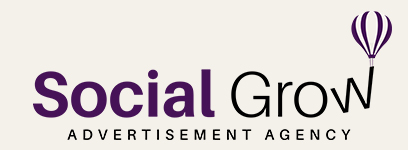Graphic Designing
Home – Graphic Designing
Graphic Designing
In the digital age, a website is often the first point of contact between a business and its audience. A well-designed website can leave a lasting impression, convey professionalism, and engage visitors effectively. At the heart of an impactful website lies graphic design, an art and science that blends creativity with functionality to deliver a seamless and visually appealing user experience.
The Importance of Graphic Design in Website Development
Visual Storytelling
Graphic design is the language of visual storytelling. It enables a website to communicate its message, values, and brand identity to the audience. Through carefully crafted graphics, images, and icons, a website can convey complex ideas and emotions in an instant. For instance, the choice of color schemes, typography, and imagery can evoke specific feelings and associations, setting the tone for the visitor’s experience.


User Experience (UX) Design
User experience is paramount in website design. Graphic design plays a critical role in ensuring that users can navigate a website effortlessly. Well-designed user interfaces (UI) are intuitive, with clear navigation menus, visually distinct call-to-action buttons, and responsive layouts that adapt to different screen sizes and devices. Effective UX design keeps visitors engaged, reduces bounce rates, and increases the time spent on the website.
Brand Identity
A website is often the digital face of a brand. Consistency in graphic design elements, such as logo placement, color schemes, and typography, reinforces brand identity. A strong brand presence helps visitors recognize and trust the website, leading to increased brand loyalty and recognition.
Key Principles of Graphic Design for Websites
Simplicity and Clarity
Simplicity is the ultimate sophistication in graphic design. Clean and uncluttered layouts allow visitors to focus on the content and the intended message. Too many distracting elements can confuse and overwhelm users, leading to a poor user experience. Clarity in design ensures that information is easily accessible and digestible.
Visual Hierarchy
Visual hierarchy guides users’ attention and helps them prioritize information on a webpage. Effective graphic design uses size, color, contrast, and placement to highlight important elements, such as headlines, buttons, and key messages. This ensures that visitors can quickly identify the most relevant content.
Consistency
Consistency in design is vital for creating a unified and professional look. Design elements, such as color palettes, fonts, and icons, should remain consistent across all pages of the website. This uniformity enhances the user experience and reinforces brand recognition.
Responsiveness
With the increasing use of mobile devices, responsive design has become a necessity. A responsive website adjusts its layout and design elements dynamically to fit various screen sizes, ensuring that the user experience remains consistent and enjoyable on smartphones, tablets, and desktops.
The Role of Graphic Elements
Color
Color is one of the most powerful tools in a designer’s toolkit. Each color has its own psychological and emotional associations. For example, blue often conveys trust and reliability, while red can evoke passion and excitement. Graphic designers carefully select color palettes that align with a brand’s identity and message.
Typography
Typography is more than just choosing fonts. It’s about selecting fonts that are legible, aesthetically pleasing, and appropriate for the content. Headers, body text, and other typographic elements should be chosen thoughtfully to enhance readability and maintain a cohesive design.
Imagery and Icons
High-quality images and icons can make or break a website’s visual appeal. Custom photography, illustrations, or carefully selected stock images can convey authenticity and uniqueness. Icons, on the other hand, simplify navigation and provide visual cues to users.
White Space
White space, or negative space, is the area between design elements. It plays a crucial role in graphic design, allowing content to breathe and preventing overcrowded layouts. Well-utilized white space enhances readability and visual appeal.
Trends in Web Graphic Design
Web graphic design is a dynamic field that constantly evolves to meet changing user expectations and technological advancements. Here are some current trends in web graphic design:
Minimalism
Minimalist design emphasizes simplicity, often using white space, clean lines, and limited color palettes. This approach prioritizes content and functionality.
Dark Mode
Dark mode interfaces have gained popularity due to their reduced screen glare and energy-saving benefits. Web designers are incorporating dark mode options into their websites.
Bold Typography
Large, expressive typography is becoming a focal point in web design. Bold fonts and creative text treatments are used to make a strong visual statement.
Illustrations and Animations
Custom illustrations and animations add personality and interactivity to websites. They help create unique, memorable user experiences.
Asymmetry
Breaking away from traditional grid layouts, asymmetrical designs create visual interest and uniqueness. They often feature overlapping elements and off-center alignments.
